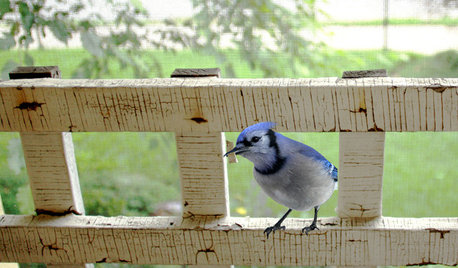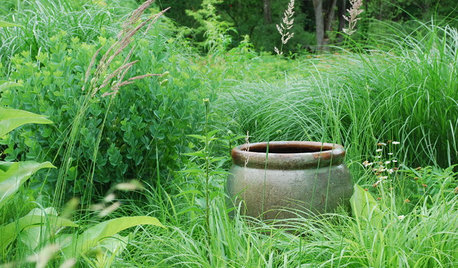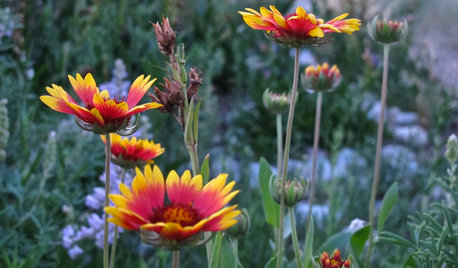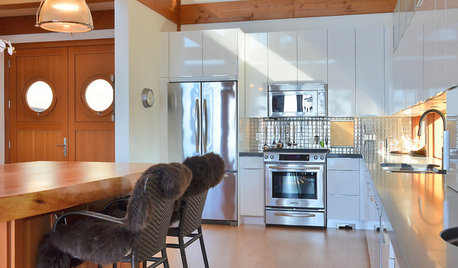Attracting Birds--some lessons learned
vegangirl
18 years ago
Related Stories

INSPIRING GARDENSWhat We Can Learn From Longwood Gardens’ New Meadow
Sustainability, ecology, native plant communities ... this public garden is brimming with lessons on horticulture for home gardeners
Full Story
GARDENING FOR BUTTERFLIESA Quick-Start Guide to Bird-Watching for Fun and Learning
Set out some seed and grab your field guide. Bird-watching is an easy, entertaining and educational activity for the whole family
Full Story
GARDENING FOR BIRDSBackyard Birds: Meet Some Clever and Curious Jays
Boisterous jays provide plenty of backyard bird-watching in winter. Here’s how to identify all the varieties and welcome them into your yard
Full Story
GARDENING GUIDESLessons in the Rewards of Selfless Gardening
Let go of gardening for your own vision and watch the garden’s own true vision come forth
Full Story
GARDENING GUIDES5 Invaluable Life Lessons From the Garden
The garden is both teacher and healer. Don't be afraid — dig in and reap the benefits
Full Story
GARDENING GUIDESThese Hummingbird-Attracting Native Plants May Surprise You
These flowers, vines and shrubs offer shelter and food supplies that keep hummingbirds around longer
Full Story
GARDENING GUIDESHow I Learned to Be an Imperfect Gardener
Letting go can lead to a deeper level of gardening and a richer relationship with the landscape. Here's how one nature lover did it
Full Story
GARDENING AND LANDSCAPINGBe a Citizen Scientist to Help Wildlife, Learn and Have Fun Too
Track butterflies, study birds, capture stars ... when you aid monitoring efforts, you’re lending Mother Nature a hand
Full Story
GARDENING FOR BIRDSWhat to Know About Birds Nesting in Your Yard
Learn how to observe, record data and help ornithologists with NestWatch’s citizen science project understand bird trends
Full Story
REMODELING GUIDES6 Must-Know Lessons From a Serial Renovator
Get your remodel right the first time, with this insight from an architect who's been there too many times to count
Full StoryMore Discussions






vonyon
Msrpaul
Related Professionals
Lake Oswego Landscape Architects & Landscape Designers · Washington Landscape Architects & Landscape Designers · Bethel Park Landscape Contractors · Farmington Landscape Contractors · Hannibal Landscape Contractors · Hawaii Landscape Contractors · Kerman Landscape Contractors · Lebanon Landscape Contractors · Mashpee Landscape Contractors · Mercedes Landscape Contractors · Monterey Landscape Contractors · Yuba City Landscape Contractors · Long Branch Swimming Pool Builders · Redlands Swimming Pool Builders · Rockwall Swimming Pool BuildersvegangirlOriginal Author
Msrpaul
vegangirlOriginal Author
vegangirlOriginal Author
cactus_cowboy
vegangirlOriginal Author
Elaine_NJ6
vonyon
vegangirlOriginal Author
Msrpaul
vegangirlOriginal Author
serenoa
vegangirlOriginal Author
catherinet
njtea
vegangirlOriginal Author
vegangirlOriginal Author
vonyon
vegangirlOriginal Author
terrene
vegangirlOriginal Author
terrene
vegangirlOriginal Author
vonyon
barton
vegangirlOriginal Author
vonyon
vegangirlOriginal Author
terrene
vonyon
terryr
vonyon
terryr
vonyon
terryr
organica
vegangirlOriginal Author
njbiology
vegangirlOriginal Author
chrsvic
terrene
Iris GW
vegangirlOriginal Author
terrene